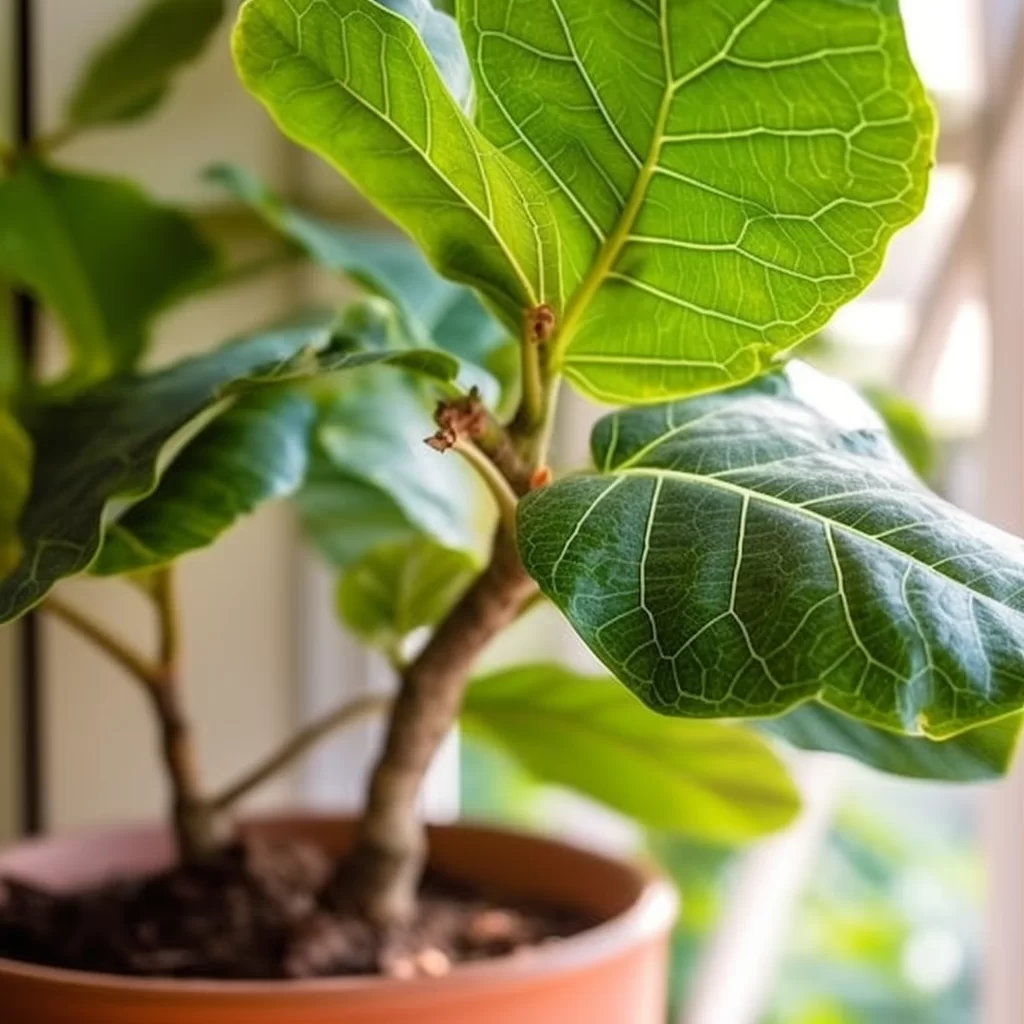Story of Day :
Contents
The Fiddle Fig Leaf Plant: A Complete Guide and Care Tips
Are you looking to spruce up your living space with some greenery? The fiddle fig leaf plant, also known as the Ficus Lyrata, is a popular choice for many home gardeners.
Its large, violin-shaped leaves add a unique touch of elegance to any room.
In this complete guide, we’ll explore everything you need to know about the fiddle fig leaf plant and how to care for it.
What is a Fiddle Fig Leaf Plant?
The fiddle fig leaf plant is native to West Africa and can grow up to 40 feet tall in its natural habitat.
However, when grown indoors as a houseplant, it typically reaches around 3-6 feet in height.
Its distinctive leaves can reach up to 18 inches long and are shaped like violins or fiddles hence the name “fiddle fig.”
Where Should You Place Your Fiddle Fig Leaf Plant?

The ideal location for your fiddle fig leaf plant is near a bright window where it will receive indirect sunlight.
Direct sunlight can scorch the leaves of your plant so avoid placing it directly under harsh rays.
- If you’re placing your plant near an East-facing window ensure that its foliage doesn’t get blasted by the early morning sun.
- A North-facing window works well too since light levels tend not be too intense (though make sure there’s plenty of brightness.)
- If you’re planning on keeping yours near South or West-facing windows then putting them behind sheer curtains should reduce strong rays from damaging their delicate foliage.
Watering Your Fiddle Fig Leaf Plant:
Your indoor humidity will determine how often your plant needs watering.
The fiddle fig leaf plant prefers to be kept in moist soil, but not waterlogged.
It’s essential to allow the top inch of soil to dry out before watering and always ensure the pot has good drainage holes.
- During winter months: Water every two weeks.
- During summer months: Water every 7-10 days depending on the humidity levels in your home.
Fertilizing Your Fiddle Fig Leaf Plant:

You can keep your fiddle fig leaf plant healthy by fertilizing it once a month during spring and summer with a balanced houseplant fertilizer that is diluted according to instructions.
During fall and winter, it’s best not to add any additional nutrients since the plants require little energy during those colder months.
Common Issues With Fiddle Fig Leaf Plants
The health of your fiddle fig leaf plant may become compromised due to several factors including overwatering or underwatering, pests, disease, or inadequate light levels.
Some common issues include;
- Brown spots on leaves: This could be an indication that you’re overwatering (or under-watering) which causes root rot by creating stagnant water in the soil around roots.
Cut back on watering frequency if this is happening; make sure you’re only giving enough moisture so that it reaches about 1″ below its surface.
- Dry and curling leaves: This happens when there isn’t enough moisture in their environment – raising humidity by misting them regularly can help alleviate symptoms until conditions improve for growth again!
- Brown edges: If you notice brown edges forming around your ficus’ leaves then check for drafts coming from windows or air conditioning vents.
These could be drying out the leaves too quickly, which will cause them to brown.
- Pests: Spider mites and mealybugs are common with fiddle fig leaf plants; if you notice these pests then isolate your plant from others and treat it immediately.
You can use an insecticidal soap for treatment but don’t forget to rinse the leaves afterward!

In Summary:
The fiddle fig leaf plant is a beautiful and unique houseplant that can add elegance to any space.
To ensure its optimal health, make sure you place it in bright light away from direct sunlight, water only when necessary while ensuring good drainage and apply fertilizer once during spring/summer months.
Monitor humidity levels with a hygrometer if possible alongside checking frequently for pests or signs of diseases.